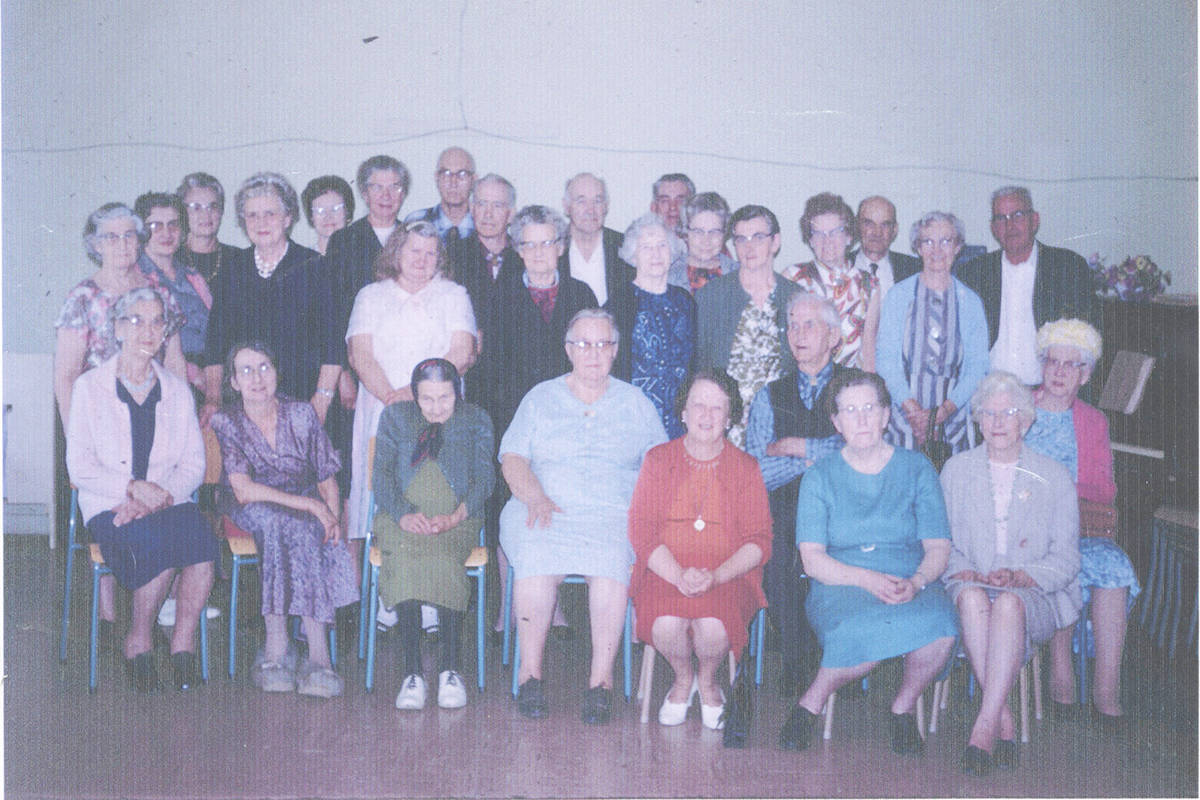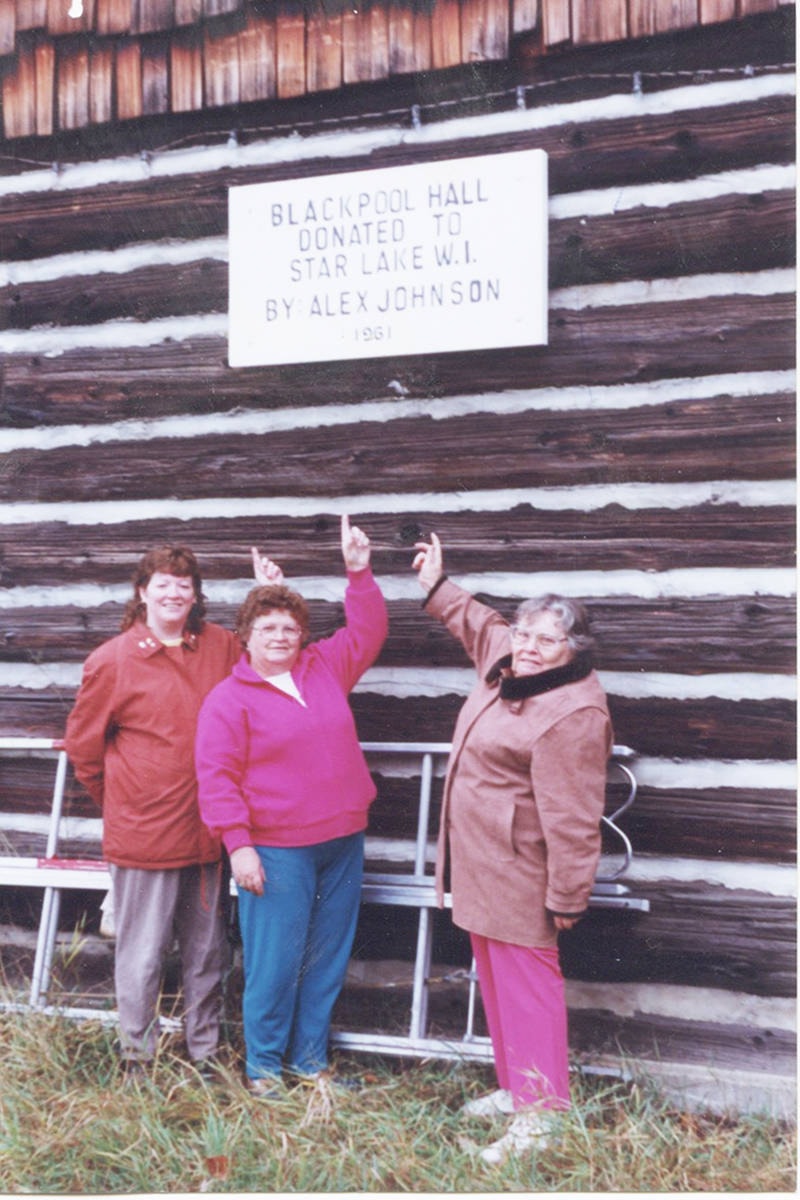Submitted
This organization was formed in 1943 in the North Thompson Valley. It was not a large gathering, but the ladies were appreciative.
The W.H. Johnson family owned much land in this valley. On a portion of it, in a central location, a community hall was built in 1931. The Star Lake Women’s Institute was given this hall in 1960 by the Johnson Family.
It made for a central location for gatherings and is still in use today. Over the years we have helped many families and our men overseas during the war years. Those who came back were welcomed with much celebrating, some had brides accompanying them to this valley.
A school was started in Blackpool with the Women’s Institute ladies participating as teachers. Swimming conditions improved at the local beach. Wedding showers were given by members, for their daughters and granddaughters and friends. Start Lake Women’s Institute helped with both financing and moral support to establish the United Church in Clearwater.
The group thought up many various money-making projects. The McGregor family donated pigs on the hoof and the Women’s Institute ladies sold tickets on them. A public health nurse service and dental clinic were established. Small gifts were to be bought for people due to illness. Quilts were made, all different kinds. The British Columbia Dogwood was a specialty on the quilts.
Numerous whist drives and dances were held, and auction sales took place quite frequently. Many community picnics were also held. The committee for the Manitoba Flood was sent $153.19 in 1950. Bingos were started in 1946 and have been a marvelous fundraiser.
Closing in on the later years, more than $9,000 has been donated to charity and the community through our bingo games and other donations.
We helped out with house fires continually since 1943, giving donations of personal things and clothing to the victims.
We sponsored May Queens and there have always been entries in the fairs. Our British Columbia Women’s Institute cookbooks have always been on sale. Hazel Small taught tatting, Buddy Johnson taught oil painting and knitting was taught as well as many other crafts. Marge Bennett wrote poems about the Institute.
Following is a list of donations we’ve made:
Christmas Amalgamated, Ronald McDonald House, minor hockey, wrestling club, Brownies, Girl Guides, Queen Alexandria Hospital, Pennies for Friendship, Timmies Telethon, Royal Inland Hospital children’s ward, Institute for the Blind, healthcare research, Red Cross, Popsicle Fund for Vancouver Children’s Hospital, cancer clinic, skating club, rescue van equipment, hospital auxiliary, mental health, Nettie Dewitt bursary, multi-level extended care and other projects too numerous to mention.
A bit of history: Women’s Institute of B.C. helped start the Queen Alexandria Solarium in 1927 on Vancouver Island by raising funds and also helped establish the Vancouver Children’s Hospital. We still work toward raising money for charity.
In the last few years our membership has grown and we still own the Blackpool Hall, but have a hall board to look after it.
We do not hold bingos and teas as there are only five members now. Our meetings are held on the second Thursday of the month at 1 p.m. at the Blackpool Hall. Young children and babies are welcome.
If you wish to join our group please let us know. Membership is $50 per year and we can be contacted at 250-587-6442.
Building of the Blackpool Hall
It was 84 years ago that the local people coming from Blackpool, East Blackpool, round-top, and Clearwater, volunteered their labor and expertise to build the Blackpool Hall for the community.
The corner at the junction of the main road down the valley, now called the “Old North Thompson Highway”, was the most logical place to build it.
Alex Johnson had cleared many acres for his farm and it is believed they used the logs from those trees to build the hall in early 1940. The girls did the cooking and peeling logs and the men did the building. Dances were held before the hall was finished. There were floors and walls, but no roof. There was also no electricity so oil lamps were mounted on the walls and protected with chicken wire cages.
Nettie Dewitt played the piano, Ivan Bennett played the violin, Mr. Woodman also played the violin, Joe Richmond played the drums, a man from Little Fort played the banjo, and they also used a windup gramophone.
Mr. W.J. Johnson and six families contributed in many ways during the construction and should be remembered. These include the Johnson family, the Foote family, the Cleavley family, Daroren family, Jenkens family and the MacKenzie family.
Many others over the years have given their time and help, too many to name them.
In 1975 a 20 ft. addition was put on the hall and a new roof and cement foundation was added in 1975-76.
Earlier, in 1961, Alex Johnson gave the hall to the Star Lake Women’s Institute. This small group of women, over the years, has managed to keep the hall alive. Many events have been held there and many memories were made for a lot of families.
For a few years, the women managed to keep the hall active, but then the cost of maintenance and upkeep became too much and the hall sat empty. In around 2008, with the help of Blackpool taxpayers, Women’s Institute and the new hall board committee, the hall was again reopened and used by the community.
The Blackpool Hall is designated as a Heritage Building and can never be torn down. The Star Lake Women’s Institute would like to thank everyone who helped make the Blackpool Hall what it is today.
Like us on Facebook and follow us on Twitter

